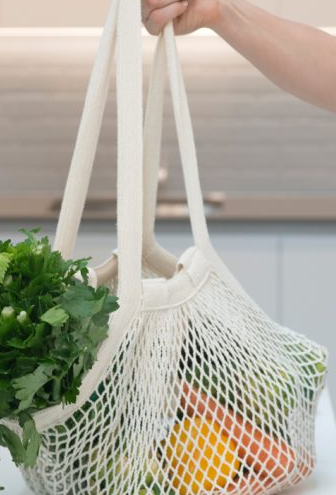String Bag
What you need:
 One side of a weaving loop (the one envisioned is ~9-inches and functions admirably)
One side of a weaving loop (the one envisioned is ~9-inches and functions admirably) 18-20 wooden garments pegs for a 9" loop (you may require a couple of extra in the event that they split while setting them on the circle)
Hemp, material, or cotton twine or string (approximately 120 yds.)
Scissors
12-inches cotton line/calfskin tie (discretionary)
Place the garments pegs onto the edge of the weaving outline. Spot the pegs approximately one inch separated, and push down solidly ensuring each peg fits firmly.
To start, place a 20-inch last part of the string through the focal point of your edge. (This will be long on the grounds that it will be the handle of your pack.) Wrap the string (from the ball) twice around one of the pegs clockwise. You can wrap the last part of the string around the base of a peg so it doesn't impede you.
You will at that point ignore the base circle the top circle and off the peg. Rehash to the following peg to one side, circling twice and ignoring the base circle the top and off the peg. Rehash for the rest of the pegs until you are back to the primary pin with a solitary circle on it.
To start weaving, you won't circle the string around the peg. Rather, just acquire the string front of the peg with one circle underneath it.
Pass the base circle over the top string and off the peg. Rehash this strategy on all the pegs, turning the loom to one side. You should circumvent the circle commonly to shape the pack. The fiber will extend altogether once off the loom. Weave in the round for 4-6 inches relying upon the size you need your sack. The pack will extend altogether once off the casing.
Once you arrive at your ideal length, you will start to push off. Cast off beginning a similar peg that you started weaving (where you can discover the last part). Cut the string, leaving a 12-inch tail.
Carefully slip the principal circle off the pin and pass the last part through the circle. Rehash for all the circles and pegs.
Pull the last part to secure the base of the sack together. Tie a couple of secure bunches through the contiguous circles and mesh the last part into the pack.
To make a handle, utilize the last part of the string toward the beginning of the pack. Associate it to the contrary side of the sack, weaving it through an accessible circle (or two). Bring the last part back over to where it began and secure a bunch.
If you incline toward a more extensive handle you can utilize additional string to tie a lash onto either side of the pack.
Shape your bag and use it to package small gifts and treasures.




